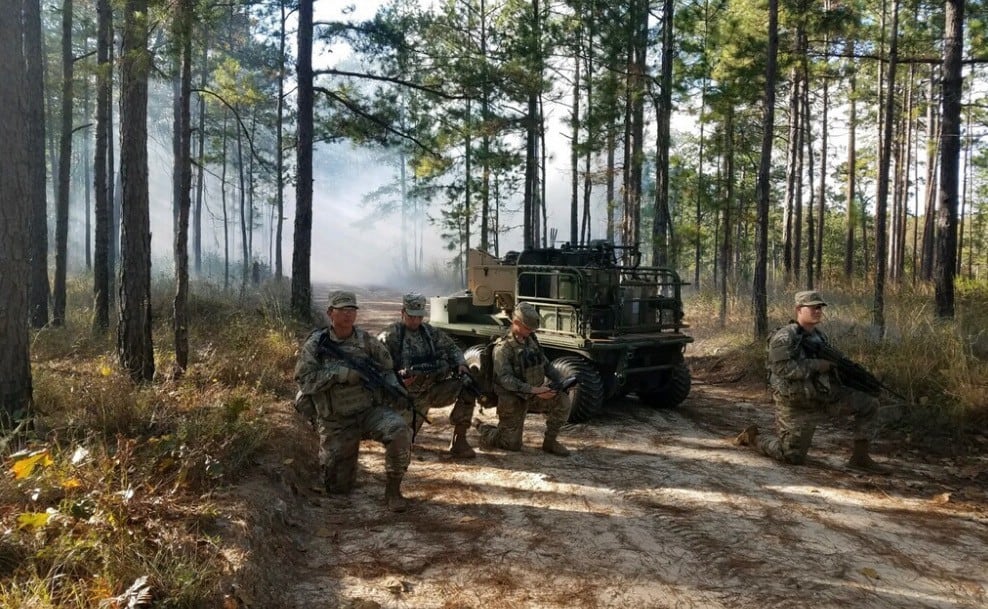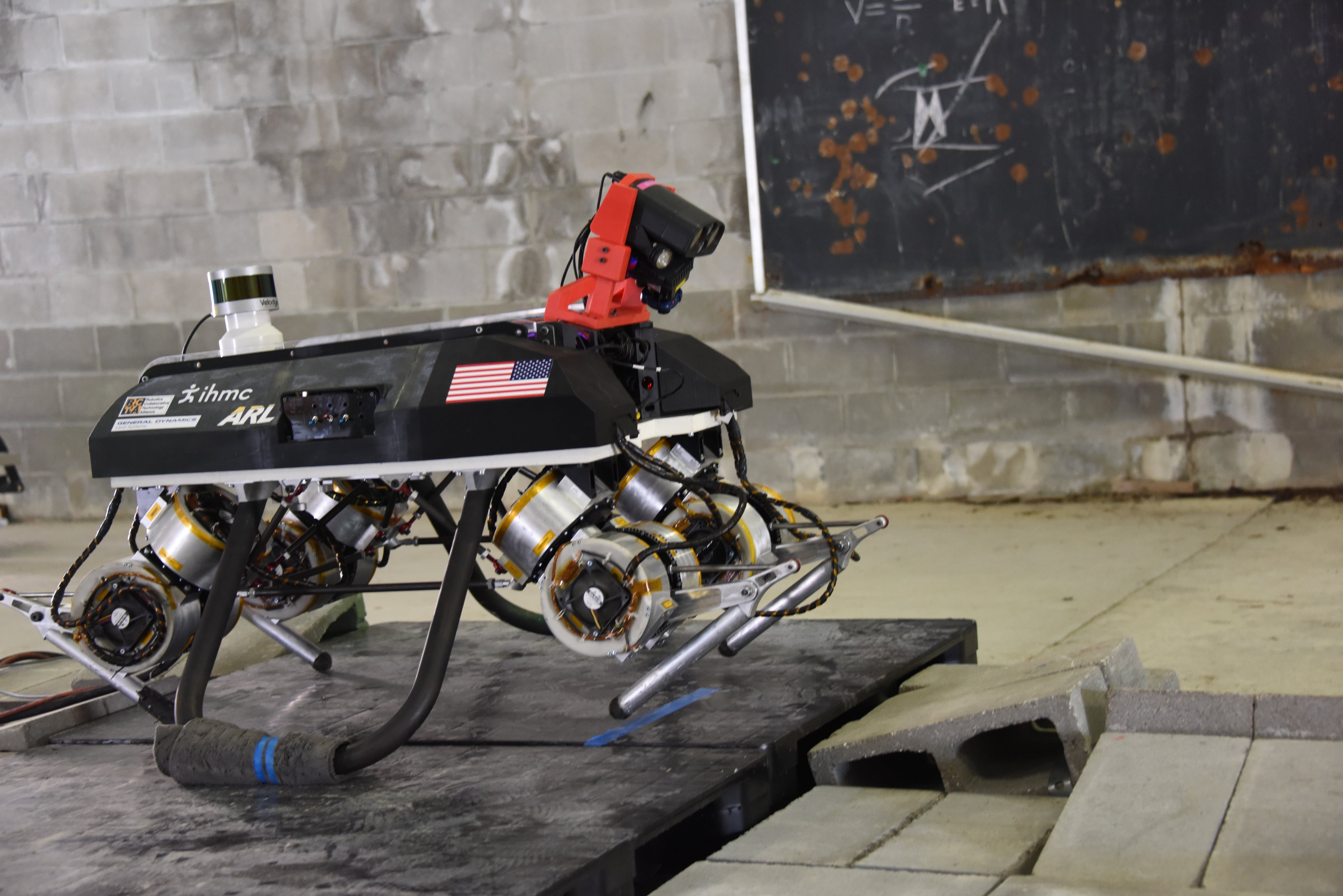New research by Army scientists could lead to legged robots that are as efficient as wheeled or tracked battle buddies — a boon for dismounted infantry in rugged terrain, such as mountains or cluttered urban streets.
That research was recently put together from digging through decades-old data on studying how mass, speed and power of animals could be measured.
The research and formula that emerged were recently published in a paper in the peer-reviewed scientific journal PLOS ONE.
Researchers Alexander Kott, Sean Gart and Jason Pusey, all with the Army Research Laboratory, co-authored the paper that could contribute to future robotic vehicle development, according to an Army statement.
The formula is important because it shows the same trend lines for how mass, power and speed relate to each other — regardless of whether what’s being measured is a cockroach or a tank.
RELATED

Basically, how much mechanical power an animal has to expend to move a certain amount of mass at a given speed parallels what machines have to produce. And that could give soldiers more mobility options to bring robots with them where wheeled or tracked vehicles simply can’t go.
Advances in aerial reconnaissance drones have pushed adversaries out of open spaces and into more difficult terrain, like al-Qaida and the Taliban in the mountains of Afghanistan or ISIS fighters dug into Mosul, Iraq.
“In the world of unmanned combat aerial vehicle and intelligent munitions, there is a growing role for dismounted infantry that can advance, often for multiple days, and attack in the most cluttered terrain such as mountains, dense forests and urban environments,” said Kott, ARL chief scientist.
But current legged robots have poor energy efficiency, which translates to more batteries or fuel to run the machines for the durations they’re needed.
“To haul supplies, it must be able to carry a certain weight, or mass, at a certain time, or speed,” Gart said.
Researchers took data from 1980s studies of animal efficiency and added in analysis of a range of size and types of other examples, including a 17th Century British canon, the Ford Model T, the M1 Abrams tank and a high speed train.
Combining all of that data and finding consistent patterns means that designers can better adjust for tradeoffs in power, speed and mass as they build the next vehicle or robot.
While other areas of robotics have advanced rapidly in the past generation, legged versions have lagged.
“Ground vehicles that maneuver on wheels or tracks, and air vehicles that resemble small airplanes which we call fixed wing and small helicopters, which are rotary wing, are now quieter and easier to integrate in troop formations,” Kott said. “But for legged platforms, many hurdles remain elusive, and a huge one is making them energy efficient.”
Todd South has written about crime, courts, government and the military for multiple publications since 2004 and was named a 2014 Pulitzer finalist for a co-written project on witness intimidation. Todd is a Marine veteran of the Iraq War.





